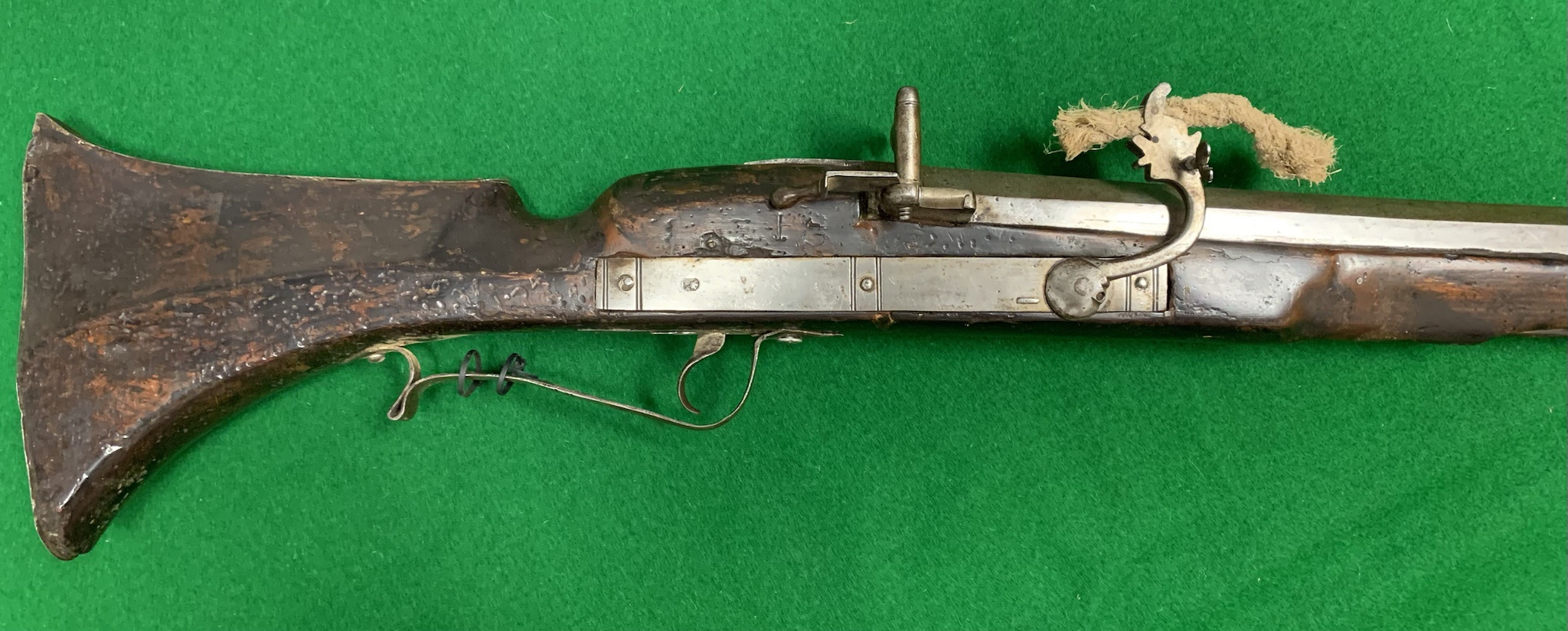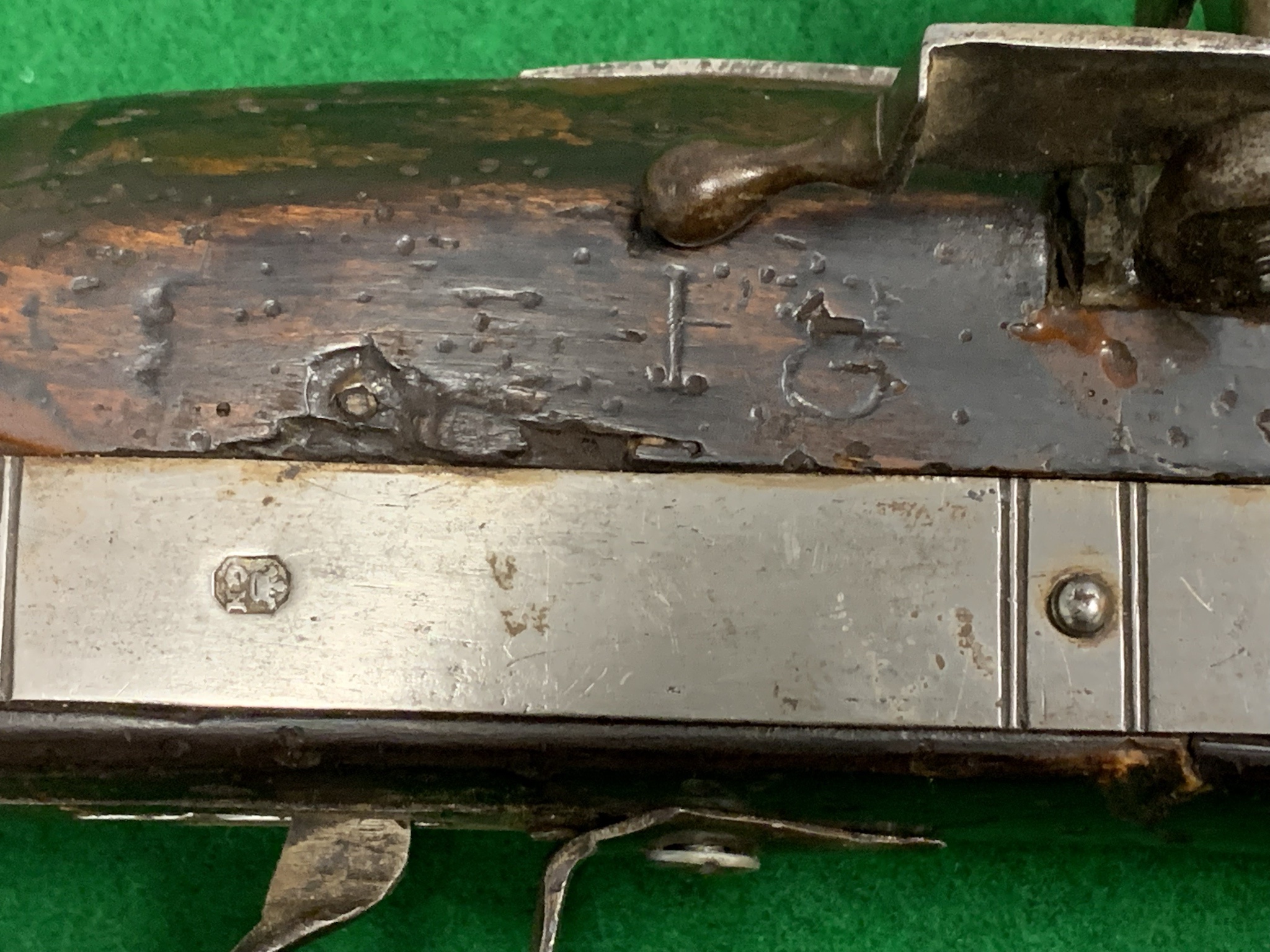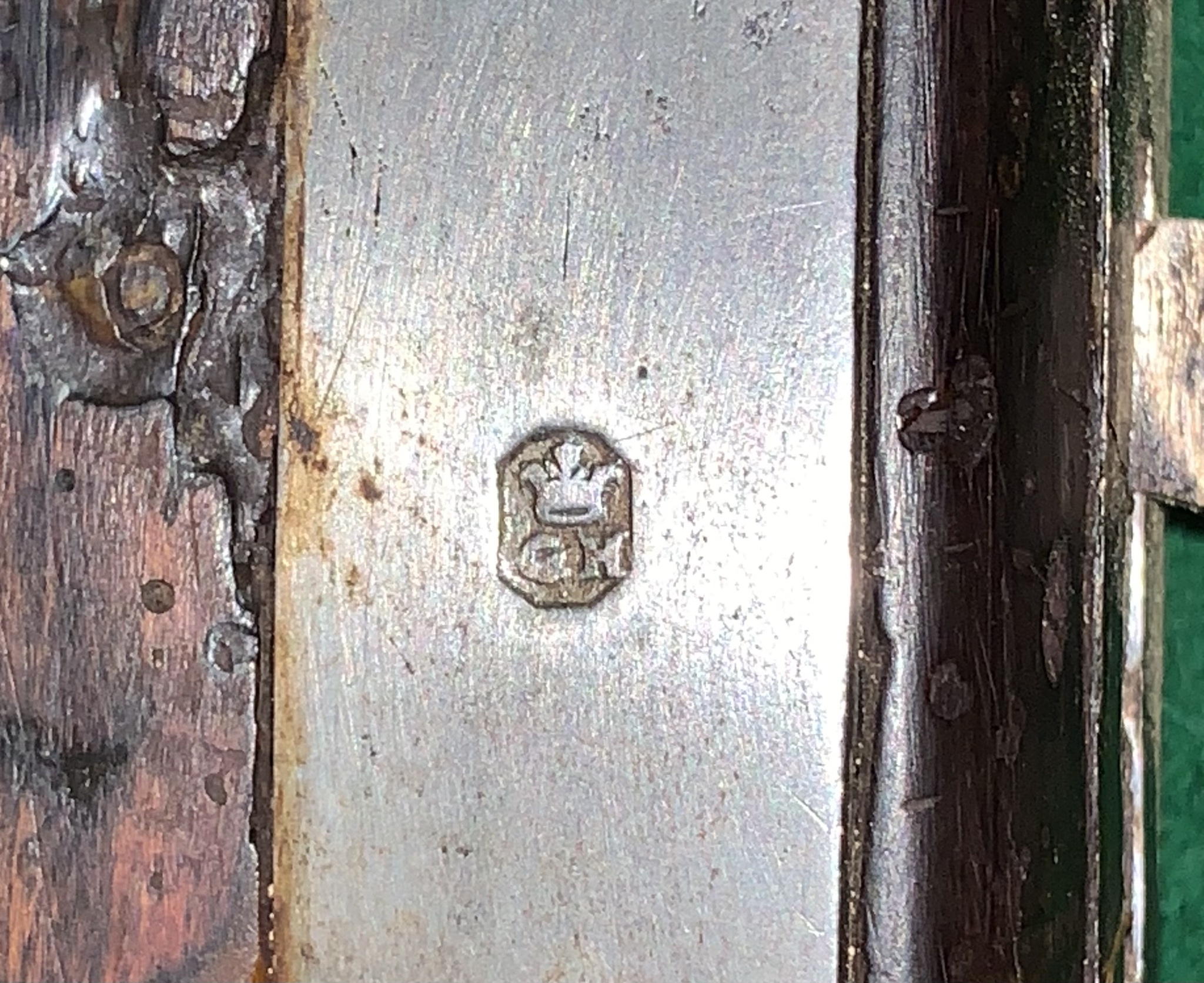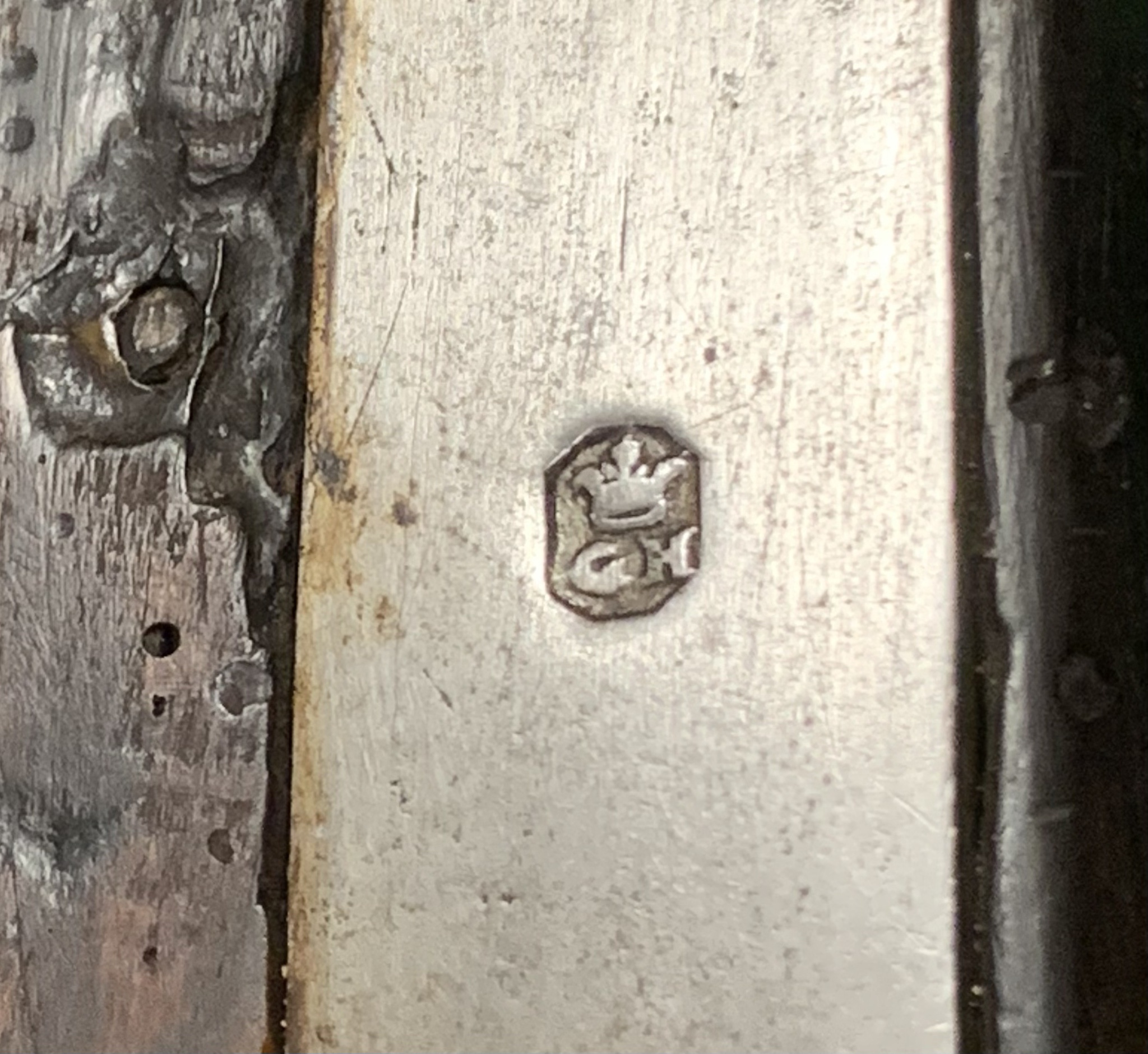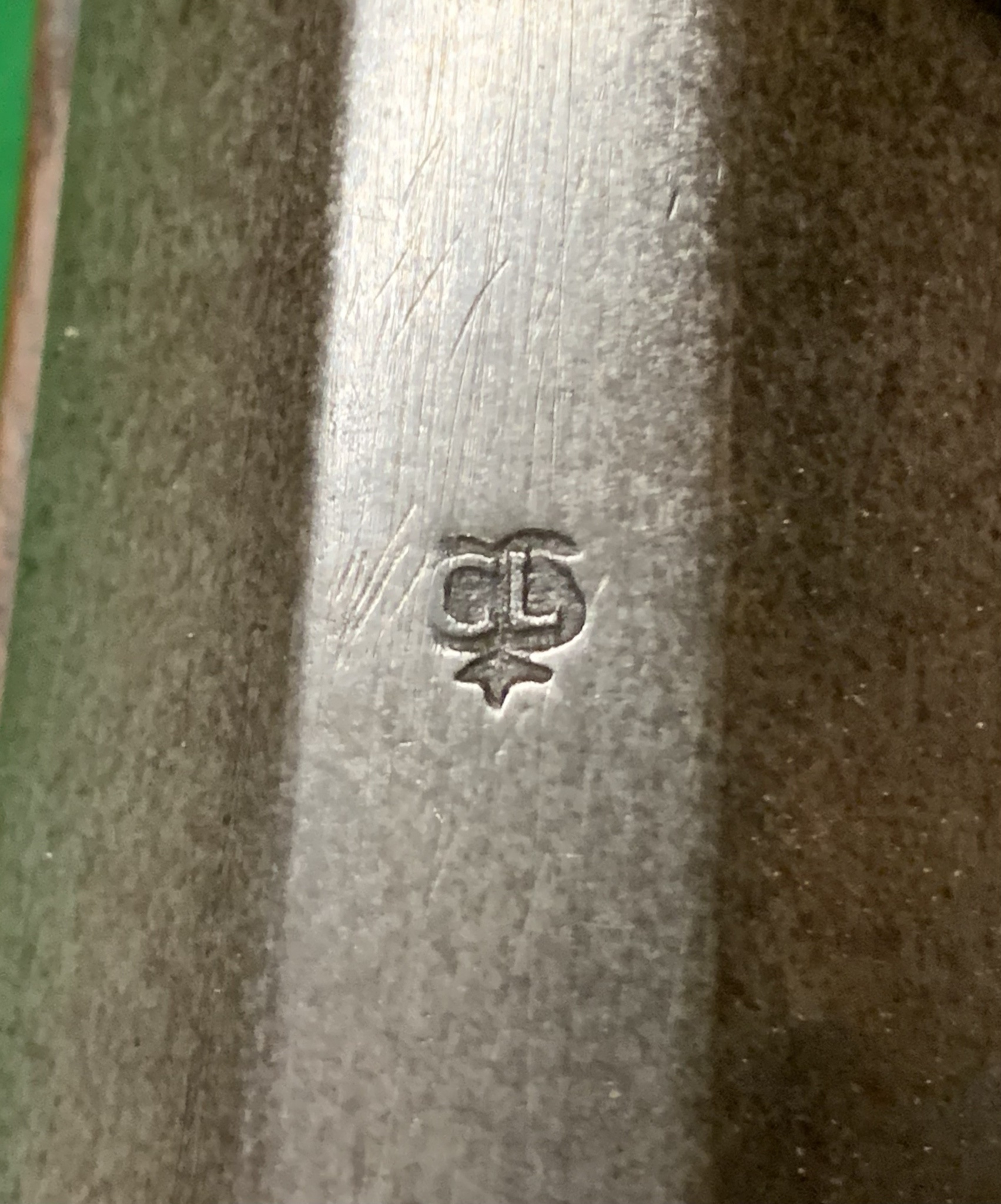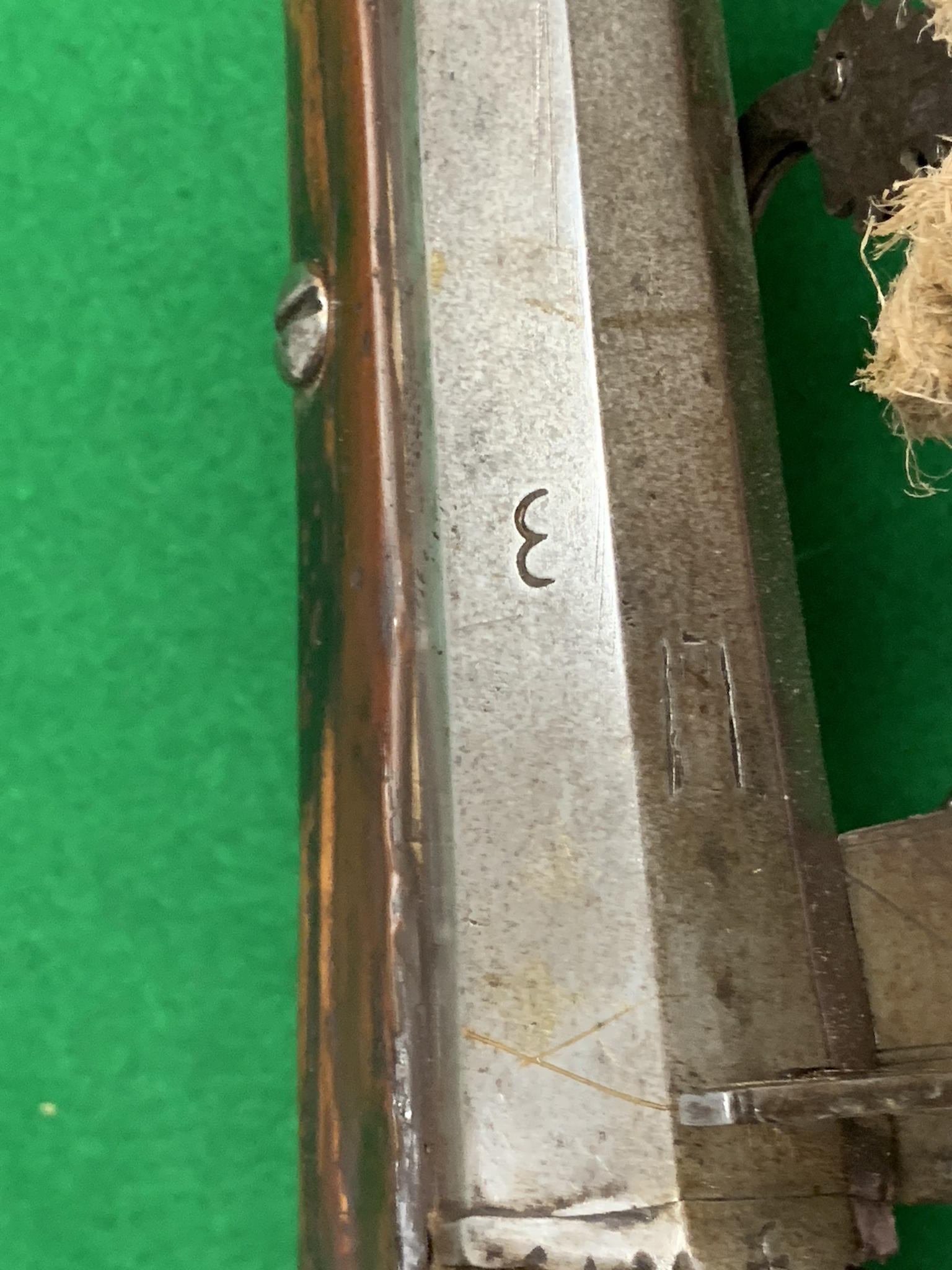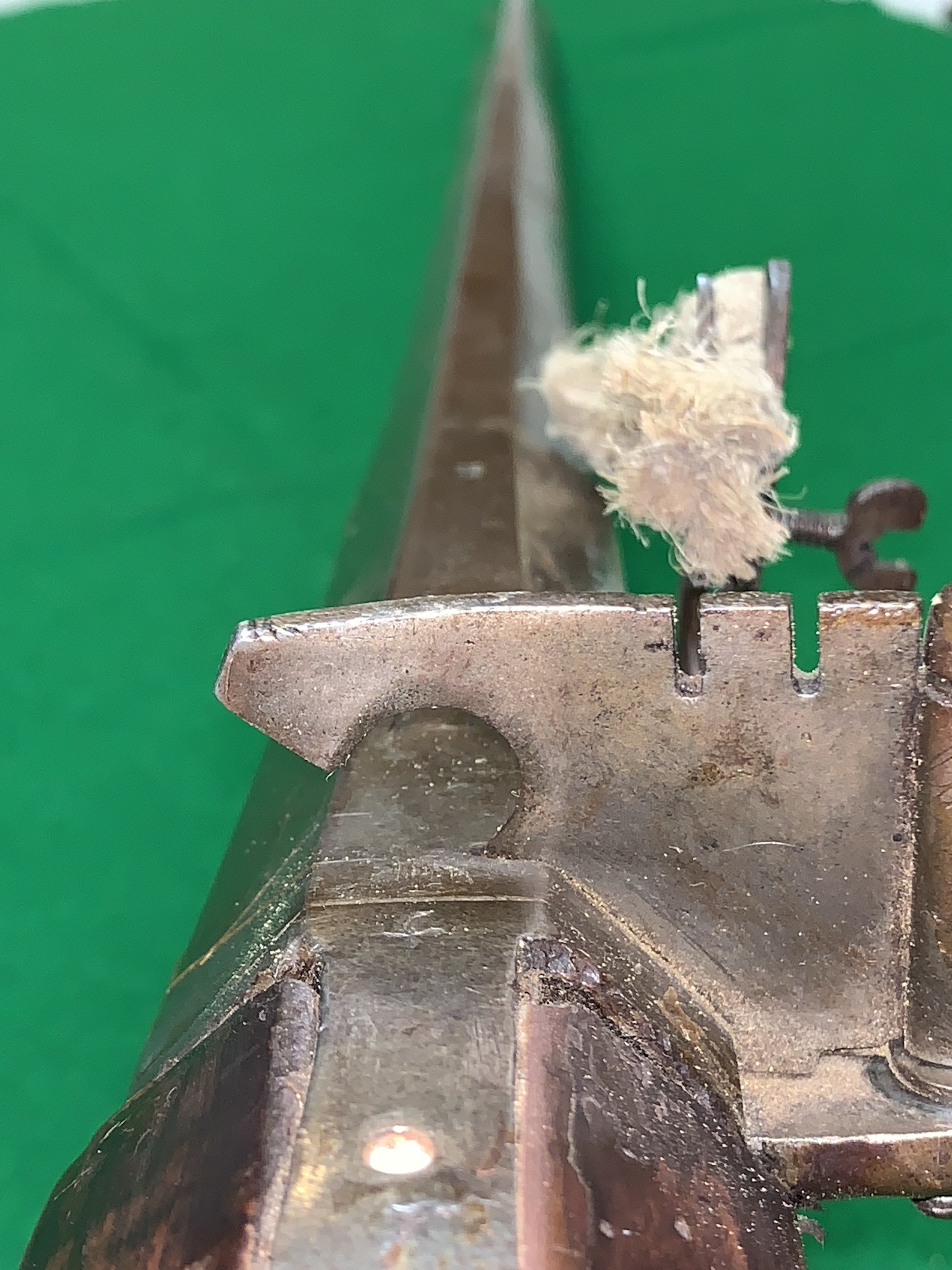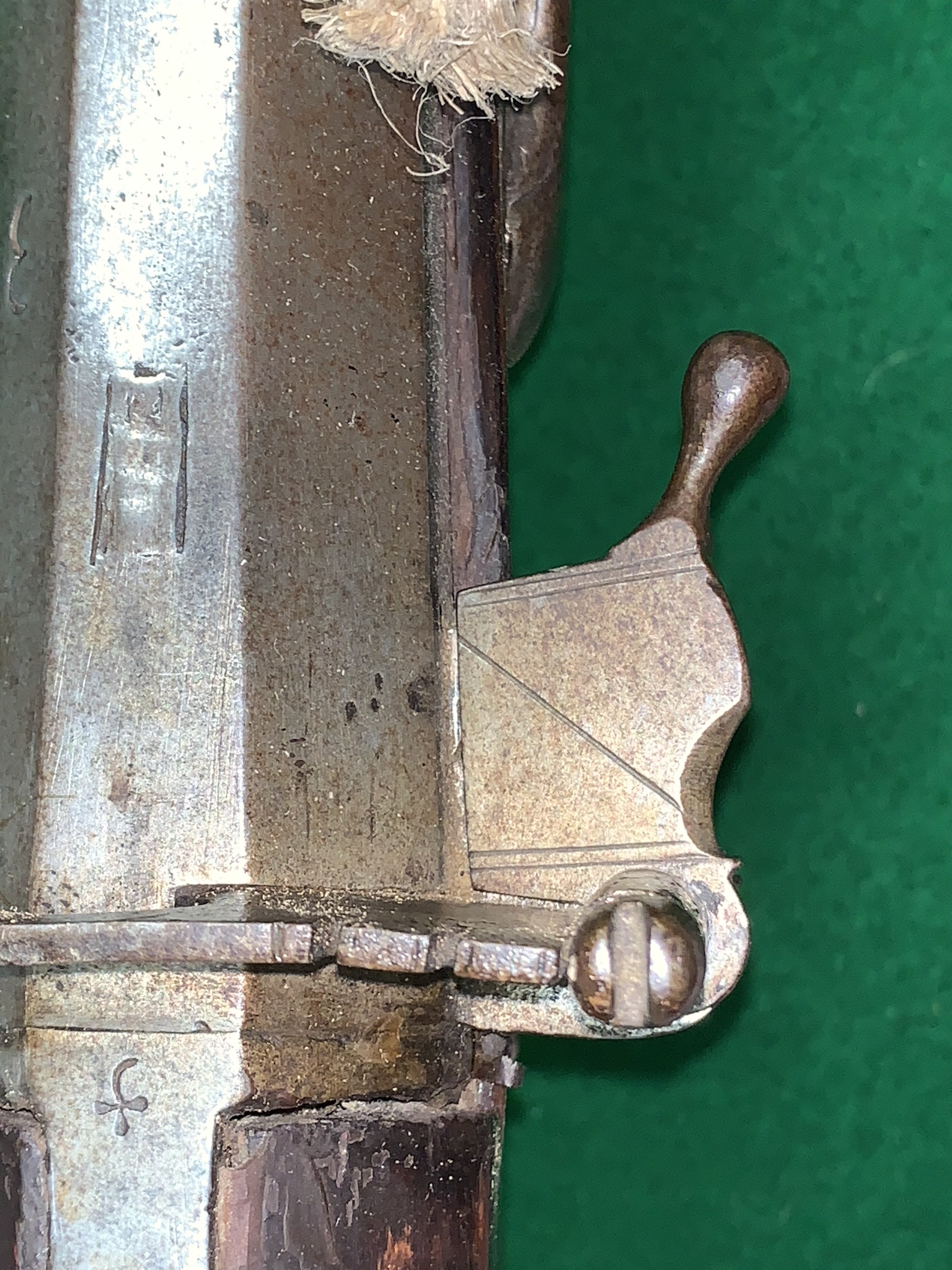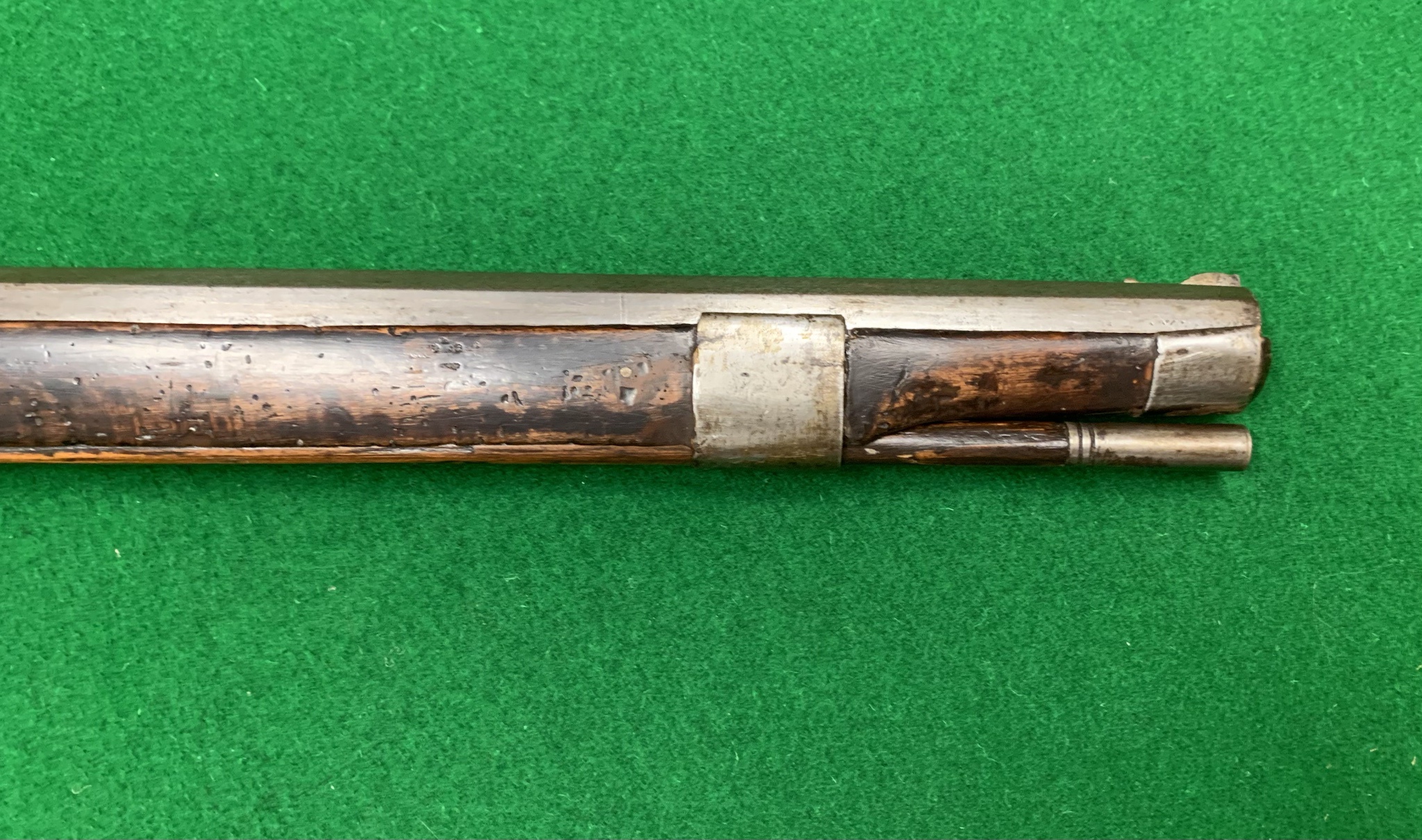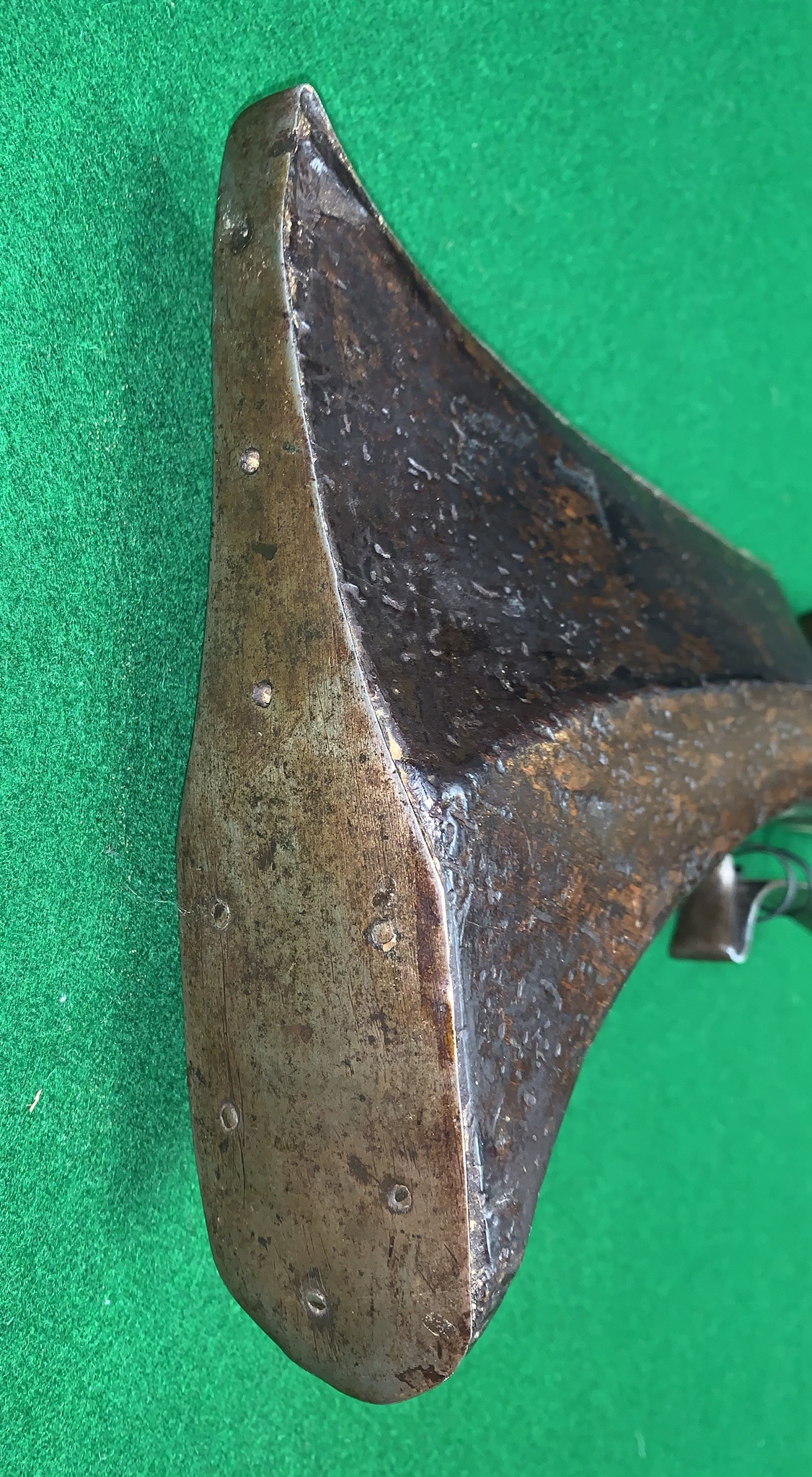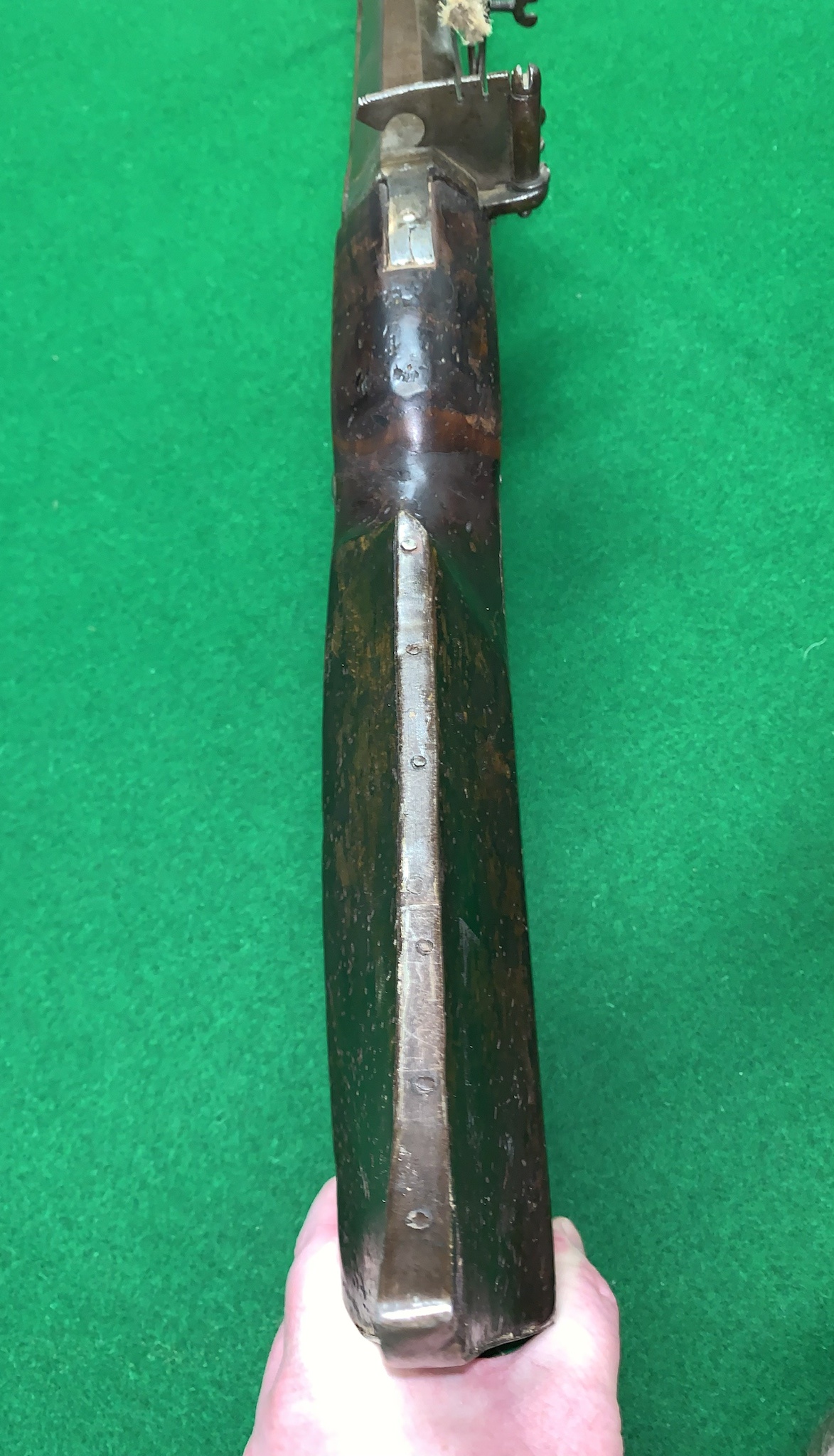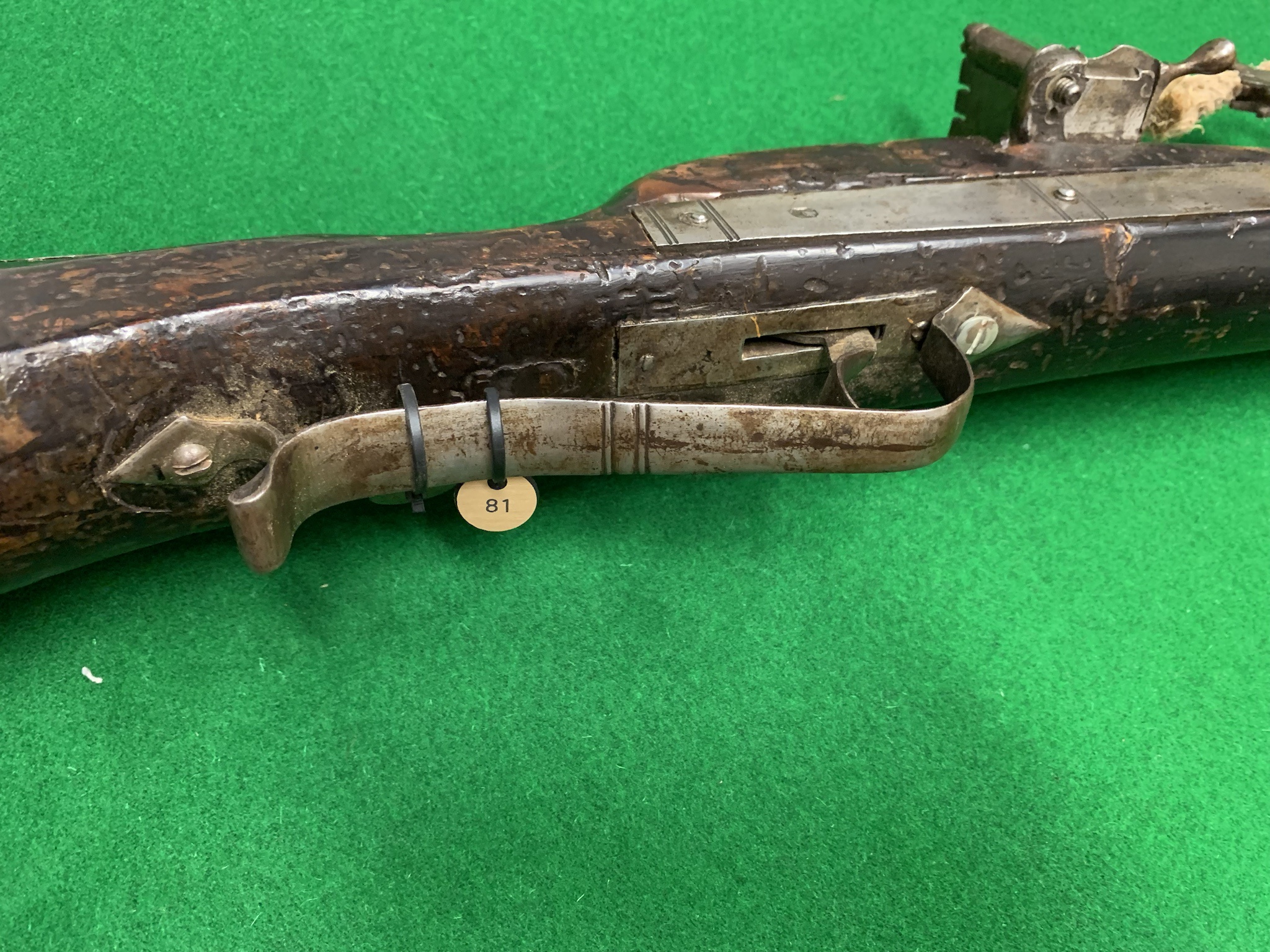What is the approximate date for this very cool musket?
Putting several observations together, I arrive at a range of 1590-1630, and I personally favor the earlier portion of that date range.
The "CL" marking is noted in Neue Stoeckel to be on matchlocks ("Luntenmusketen") from c.1590-1600.
I derive the later portion of the date range by the dimensions of the musket - total length 61 inches/155 cm; barrel length 45-1/2 inches/115.5 cm. One of the great experts in the field, the late Michael Tromner, summarized the shift towards smaller dimensions in the second quarter of the 17th Century well in post #11 of this thread: http://www.vikingsword.com/vb/showthread.php?t=18199 (the entire thread is most useful).
Finally, this one is particularly interesting to me as I haven't often seen a musket of this type with a full-length octagonal barrel. Many have an octagonal breech, incised lines maybe 1/3 of the way down, and are round from then on to the muzzle. My rather tentative observation is that the full-length octagonal barrels are earlier examples, but on that subject I am not an expert and would invite other observations!






